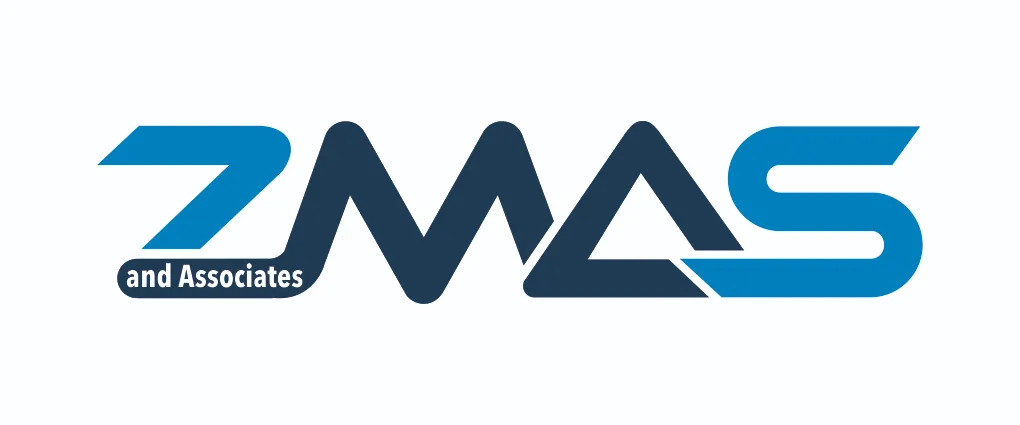In modern business operations, every functional area presents its own opportunities for deceit and fraudulence. Understanding these potential pitfalls across diverse business functions is essential in fortifying our defenses against fraudulent activities. From finance and accounting to payroll, inventory, and beyond, each department holds its own susceptibility to fraudulent schemes. Let’s uncover and explore some prevalent fraud scenarios within these business domains to empower ourselves with knowledge to detect and prevent these deceptive practices.
Table of Contents
Accounts Payable
- Creating fake vendors in the system to pay fake or unauthorized bills.
- Changing the details of an inactive vendor to pay unauthorized invoices.
- An Accounts Payable supervisor taking overpaid money for themselves and making fake repayments for personal gain.
- Stealing blank checks to use for unauthorized transactions.
- Stealing forms for wire transfers to send money to unauthorized accounts.
- Stealing checks prepared for vendor payments.
- Paying oneself using a copy of an approved invoice and directing the payment to a personal account.
- Submitting travel or entertainment expenses twice for double reimbursement.
- Deleting payment details to reduce the recorded amount the company owes.
- Selling lists of vendors, balances, or payment history to competitors.
- Changing the Accounts Payable software to calculate incorrect amounts owed to vendors.
- Unfair bidding practices, leaking information to ensure a specific supplier wins.
- Changing account balances to show less owed and boost profits.
- Working with Accounts Payable staff to divert payments to personal accounts.
- Faking invoices to pay a third party instead of the actual vendor.
- Forging check signatures or endorsements.
- Falsifying cash records and taking the extra money for personal use.
- Collaborating with a contractor to overpay them and pocket the extra cash.
Purchase
- Altering supplier invoices to pay extra and pocketing the difference.
- Using company purchase orders for personal purchases.
- Giving perks to favored customers or suppliers in exchange for kickbacks.
- Buying goods from connected suppliers at higher prices.
- Collaborating with suppliers to receive low-quality goods at regular prices.
- Taking purchase discounts but not recording them, using the money personally.
- Purchasing unauthorized items through expense reports to avoid approvals.
- Accepting incentives from vendors in exchange for giving them business.
- Influencing agents with gifts for favorable treatment when delivering subpar goods.
- Suppliers teaming up to rig bids and subcontract work to the winner.
- Managers getting stock from vendors in exchange for business.
- Manipulating bids by favoring certain vendors, hiding competitor bids, or delaying information sharing.
Examples:
- A manager starts their own store using company resources.
- Using leftover materials from work for personal projects.
- Getting free cars from a dealer for personal use.
- Substituting materials on contracts to save costs.
- Getting personal home improvements billed to the company.
- Executives buying property before leasing it to the company at high rates.
Payroll
- Adding fake employees to the payroll or paying a single employee multiple times for more money.
- Manipulating hours, rates, or deductions to inflate an employee’s pay.
- Keeping employees on the payroll after they’ve left the company.
- Holding back wages that should have been paid to employees.
- Altering timecards, vacation records, or sick leave to pay more than owed.
- Staging employee injuries to misuse medical benefits.
- Accessing private employee info to commit fraud, like using personal data for unauthorized credit cards.
- Mishandling unclaimed wages and using the money for personal gain.
- Misusing employee funds like profit-sharing or retirement savings for personal expenses.
- Slacking off at work by arriving late or leaving early.
- Padding budgets for projects to give yourself extra time or expenses.
Workmen Compensation
- Filing for Workers’ Comp when the injury didn’t happen during work hours.
- Inflating a claim by adding unrelated medical treatment expenses.
- Overpaying benefits to an employee on leave, beyond what’s legally required.
- Boosting the amounts on Workers’ Comp invoices through unfair agreements.
- Offering perks or business to favored vendors for Workers’ Comp in exchange for kickbacks.
- Neglecting to investigate potentially fraudulent Workers’ Comp claims.
- Settling fake claims for kickbacks through collusive out-of-court settlements.
Receivables
- Juggling cash receipts to hide shortages by delaying their entries.
- Tricking with bank transfers, depositing without proper entries to mask shortages.
- Depositing checks without recording them, issuing checks to employees for unrecorded amounts.
- Creating a fake customer account and pocketing their payments.
- Pocketing money from written-off accounts as “bad debt.”
- Collecting on charged-off accounts without recording it.
- Offering false credits for fabricated customer claims and returns.
- Delaying or only partially depositing money into the bank.
- Allowing unreliable customers to order goods leading to bad debts.
- Failing to repay customers for overpayments, hiding the write-offs.
- Using dormant customer accounts to cash checks for personal use.
- Misstating aging of receivables and avoiding bad debt recognition.
Billing
- Concealing sales or income from records.
- Incorrectly billing customers—overbilling or underbilling—for personal gain.
- Offering unauthorized discounts to customers.
- Deleting orders to avoid billing and payment.
- Billing check orders at reduced rates for personal benefit.
- Deceiving by charging customers full price but recording a discounted rate, pocketing the difference.
- Requesting free checks for unauthorized individuals.
- Underreporting or not reporting unshipped orders to limit unfilled orders.
- Creating fake credit memos or misusing return credits to cover inventory theft.
- Manipulating shipping and invoice dates for extended payment or concealing collection issues.
- Shifting billing dates for preferred financial outcomes.
- Reducing revenues to lower taxes or royalties.
Theft
- Forgery: Signing someone else’s name without permission.
- Collusion: Working together with someone for fraudulent activities.
- Theft: Stealing company assets or money.
- Unrecorded transactions: Not documenting transactions for personal gain.
- Embezzlement: Taking money entrusted to you for personal use.
- Theft of company products: Taking items like checks, software, or machines.
- Stealing company supplies or promotional items for resale.
- Selling items for cash without recording the sale.
- Misusing a postage meter for personal mail.
- Stealing or copying company software for personal use.
- Abusing petty cash by stealing small amounts.
- Overstating expenses in reports.
- Selling scrap materials and keeping the money.
- Inflating petty cash vouchers while taking extra money.
- Using personal receipts to fake expenses.
- Selling company door keys or combinations.
- Misusing or selling proprietary company knowledge.
- Taking sick days when not actually ill.
- Using company resources for personal needs.
- Trading company insider information or selling company data.
Bank Account
- Secret accounts: Creating hidden company accounts for personal use.
- Personal accounts: Using personal bank accounts for company funds.
- Outdated signers: Keeping terminated employees as authorized bank signers.
- Mixing roles: Allowing the same person to write checks and reconcile bank statements, enabling forgery and concealment.
- Altered checks: Modifying canceled checks to match fake records.
- Redirecting interest: Sending interest from savings accounts to personal banks.
- Off-the-books sales: Selling company items for cash without recording and keeping the money.
Inventory
- Stealing stock: Taking new or outdated items and hiding the theft in inventory records.
- False billing: Charging stolen items to fake customer accounts.
- Unauthorized purchases: Buying personal items and masking them as inventory purchases.
- Fake counts: Falsifying inventory checks to inflate stock values or hide discrepancies.
- Unauthorized loading: Adding extra valuable items onto shipment trucks.
- Redirecting returns: Sending returned items home for personal use, disguised in records.
- Recording errors: Messing up inventory records to hide excess or outdated items.
- Deleting and selling: Removing obsolete items from records, selling them for cash, and keeping the money.
- Misappropriating transfers: Stealing items moved between inventory stages and covering it up in records.
Fixed Assets
- Taking surplus items or old assets unnoticed for personal use.
- Selling an asset, pocketing the money, and not reporting it.
- Deleting asset records and selling them for personal profit.
- Falsifying asset values to look better on financial statements.
- Changing calculations to report lower depreciation and higher profits.
- Manipulating asset status to avoid proper depreciation.
- Messing up records to make it hard to trace assets and steal them.
- Stealing assets during transfer or plant disclosure.
- Accumulating extra, unused assets vulnerable to theft.
- Taking company property home, making it harder to recover.
- Not returning company property upon leaving the job.
- Recording sales but not removing assets from records, inflating profits.
- Not acknowledging worthless assets on records.
Accounting and Finance
- Fudging reports for bigger bonuses or to show better performance.
- Fabricating credit balances and converting them into cash.
- Faking profits by creating false reserves or balances.
- Manipulating inventory and sales to boost financial reports.
- Using inside info for personal stock market gains.
- Redirecting profit-sharing funds for personal gain.
- Approving fake expenses or personal bills for company payment.
- Going beyond allowed limits to borrow or buy assets/stock.
Cash Receipt
- A salesperson collects cash but doesn’t report it.
- Retail clerk takes payments but doesn’t record sales, keeping the money.
- Accounts clerk steals payments, covers it up by adjusting other accounts.
- Same as above, but hides the theft by changing customer accounts.
- Falsifies deposits to hide stolen payments in transit.
- Steals payments and hides it by debiting less noticeable accounts.
- Skimming cash from bank deposits before they’re submitted.
- External party changes bank details, withdrawing funds illicitly.
- Retail clerk skimps on recording sales, pockets the difference.
Delivery of Goods
- Driver cheats customers and sells stolen goods at a discount.
- Driver and receiver team up, steal goods, and share profits.
- Driver steals items from the receiving dock.
- Vendor cheats by shorting the customer, driver helps deceive.
- Driver dilutes crude, replaces with water.
- Vendor mixes low-quality materials with products.
- Driver lies about product quality, sells for personal gain.
- Vendor delivers goods to unauthorized locations.


Recent Comments